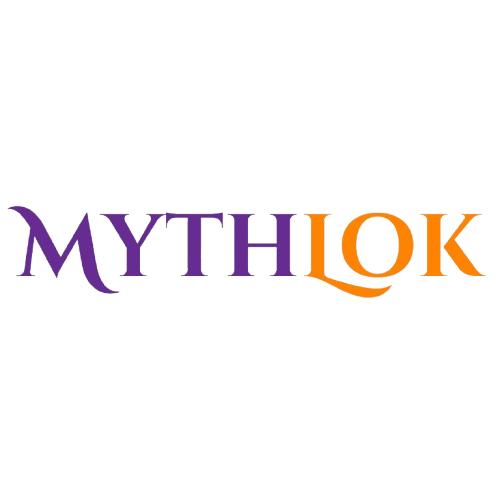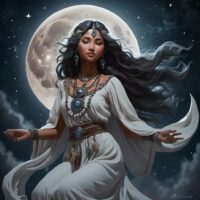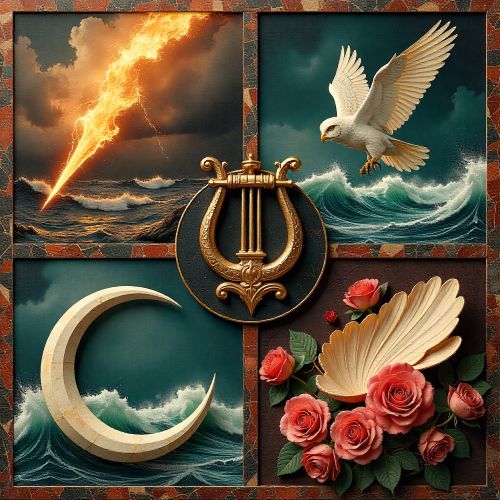Komorkis : The Moon Goddess
Listen
At a glance
| Description | |
|---|---|
| Origin | Blackfoot Mythology |
| Classification | Gods |
| Family Members | Natosi (Husband), Morning Star (Child) |
| Region | United States of America |
| Associated With | Moon, Night |
Komorkis
Introduction
Komorkis, the Moon Spirit in Blackfoot mythology, is a revered celestial figure closely tied to the rhythms of nature and the night sky. As the second eldest among the sacred Sky People, she holds an esteemed place in Blackfoot cosmology. She is the wife of Natos, the sun god, and together they are honored as the parents of the stars, symbolizing balance and harmony in the universe. Her presence reflects the deep spiritual connection the Blackfoot people have with celestial cycles, reinforcing their understanding of the natural world.
Physical Traits
Komorkis is not often described in physical detail, as her significance lies in her celestial role rather than a defined form. As the Moon Spirit, she embodies the qualities of the moon—its glow, cyclical nature, and quiet presence in the night sky. Some depictions present her as a luminous, ethereal figure radiating a soft, calming light, symbolizing protection and serenity. In artistic interpretations, she is sometimes envisioned as a graceful woman, reflecting the moon’s nurturing and watchful nature over the world below.
Family
Komorkis is a vital figure in Blackfoot cosmology, deeply intertwined with the celestial balance of the universe. As the wife of Naato’si (Natos), the Sun God, she represents the harmony between lunar and solar forces, symbolizing the interplay of night and day. Together, they are the parents of the stars, reinforcing their role as creators and sustainers of the cosmos.
One of their most significant children is Morning Star, known as Iipisowaahs and Apisirahts, a heroic figure in Blackfoot legend. His importance extends beyond his celestial role, as he is also linked to the mortal hero Starboy (Poia), further strengthening Komorkis’s place in mythological narratives. As the grandmother of legendary figures, Komorkis’s influence extends across generations, weaving her presence into the fabric of Blackfoot storytelling.
The sacred Sky People, of whom Komorkis is an essential member, form a divine pantheon residing in the Sky World. These celestial beings guide and influence the natural order, with Komorkis’s connection to the moon emphasizing cycles, protection, and the rhythm of life. Through her relationships, she embodies balance, nurturing guidance, and the eternal presence of the night’s watchful glow.
Other names
Komorkis is known by several names, reflecting different aspects of her identity in Blackfoot mythology. She is often simply called “Moon,” directly linking her to the celestial body she represents. Another common title, “Second Eldest of the Sky People,” emphasizes her high status among the divine beings of the Sky World.
She is also affectionately known as “Grandmother Moon,” a name that underscores her nurturing and protective nature, as well as her role as a guiding presence for future generations. Another variation of her name is Ko’komiki’somma, pronounced koh-koh-mih-kih-summ, which provides insight into the linguistic richness of the Blackfoot oral tradition. The existence of multiple names and spellings reflects the adaptability of oral storytelling, where variations emerge naturally without diminishing the essence of the figure they describe.
Powers and Abilities
Komorkis, as the Moon Spirit, holds sway over the night sky, shaping its rhythms and cycles. Her presence is deeply connected to time, the changing seasons, and the natural balance of life. While her specific abilities are not always explicitly defined, her status among the Sky People suggests a profound spiritual power that influences both celestial and earthly events.
She governs the phases of the moon, ensuring their steady progression and maintaining harmony in the cosmos. Her soft glow offers protection and comfort, acting as a guardian against unseen dangers in the night. Many Blackfoot people look to her for guidance, believing she provides wisdom and insight to those in need.
Komorkis’s influence extends to nature itself, with her connection to the moon affecting the tides, plant growth, and the cycles of the natural world. She is revered not only as a celestial force but also as a nurturing spirit who watches over those who seek her blessings. Through prayers and rituals, people call upon her for protection, clarity, and the reassurance of her ever-present light.
Modern Day Influence
Although modern references to Komorkis are not widely documented, the values she represents—respect for nature, interconnectedness, and guidance—remain deeply relevant today. Blackfoot mythology, including stories of Komorkis, continues to shape cultural identity and inform contemporary discussions on environmentalism, social justice, and indigenous wisdom.
Her presence endures in Blackfoot traditions through ceremonies, storytelling, and artistic representations that honor the moon and its cycles. Many rituals still emphasize the importance of living in harmony with nature, reinforcing teachings associated with Komorkis.
In art and literature, she appears in paintings, sculptures, and stories that celebrate her role as a nurturing and protective force. These creative expressions help preserve Blackfoot heritage and introduce new generations to the richness of their mythology. Additionally, educational initiatives and cultural advocacy efforts increasingly incorporate Blackfoot legends, ensuring that Komorkis’s legacy continues to inspire and educate people about indigenous traditions and worldviews.
Related Images
Source
Wissler, Clark. Mythology of the Blackfoot Indians. Lincoln: University of Nebraska Press, 1995.
Grinnell, George Bird. Blackfoot Lodge Tales: The Story of a Prairie People. Lincoln: University of Nebraska Press, 1962.
McClintock, Walter. The Old North Trail: Life, Legends, and Religion of the Blackfeet Indians. Lincoln: University of Nebraska Press, 1992.
Dempsey, Hugh A. The Blackfoot Confederacy 1880-1920: A Comparative Study of Canadian and U.S. Indian Policy. Norman: University of Oklahoma Press, 2014.
Ewers, John C. The Blackfeet: Raiders on the Northwestern Plains. Norman: University of Oklahoma Press, 1958.
Blackfoot / Blackfeet Legends. AAA Native Arts. .
“Blackfeet Traditional Culture – All My Relations.” All My Relations, January 1, 2002.
“Blackfeet Indian Legends, Myths, and Stories – Native-Languages.org.” Native-Languages.org, January 1, 2020.
Blackfoot mythology – Wikipedia.” Wikipedia.
Frequently Asked Questions
What is lorem Ipsum?
I am text block. Click edit button to change this text. Lorem ipsum dolor sit amet, consectetur adipiscing elit. Ut elit tellus, luctus nec ullamcorper mattis, pulvinar dapibus leo.
What is lorem Ipsum?
I am text block. Click edit button to change this text. Lorem ipsum dolor sit amet, consectetur adipiscing elit. Ut elit tellus, luctus nec ullamcorper mattis, pulvinar dapibus leo.
What is lorem Ipsum?
I am text block. Click edit button to change this text. Lorem ipsum dolor sit amet, consectetur adipiscing elit. Ut elit tellus, luctus nec ullamcorper mattis, pulvinar dapibus leo.
What is lorem Ipsum?
I am text block. Click edit button to change this text. Lorem ipsum dolor sit amet, consectetur adipiscing elit. Ut elit tellus, luctus nec ullamcorper mattis, pulvinar dapibus leo.
What is lorem Ipsum?
I am text block. Click edit button to change this text. Lorem ipsum dolor sit amet, consectetur adipiscing elit. Ut elit tellus, luctus nec ullamcorper mattis, pulvinar dapibus leo.





